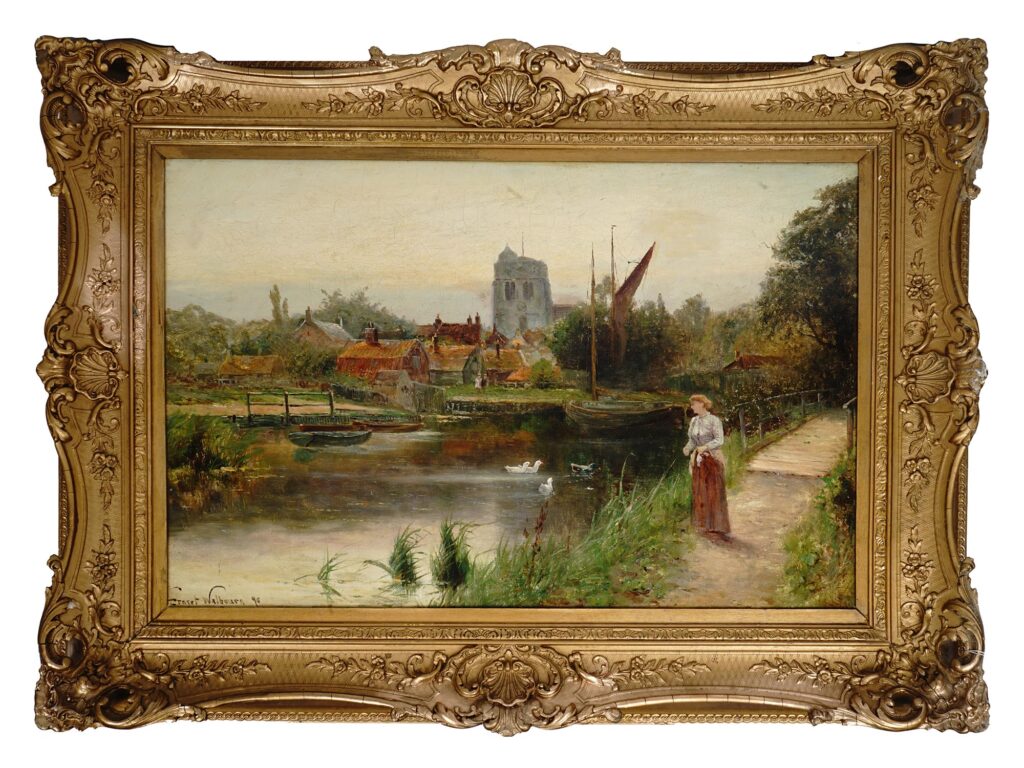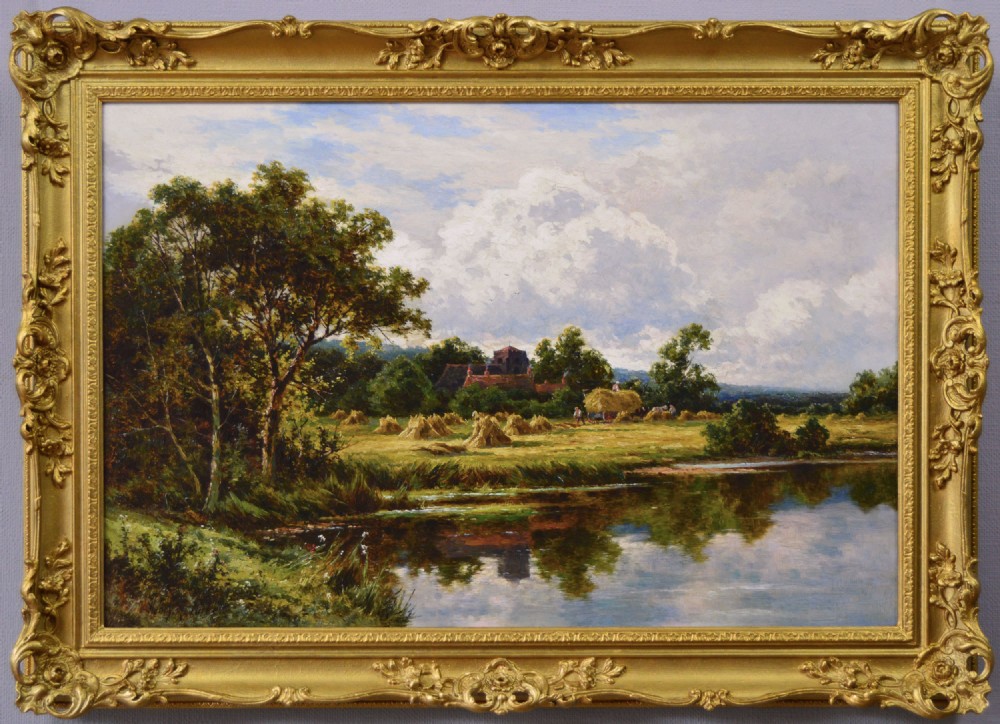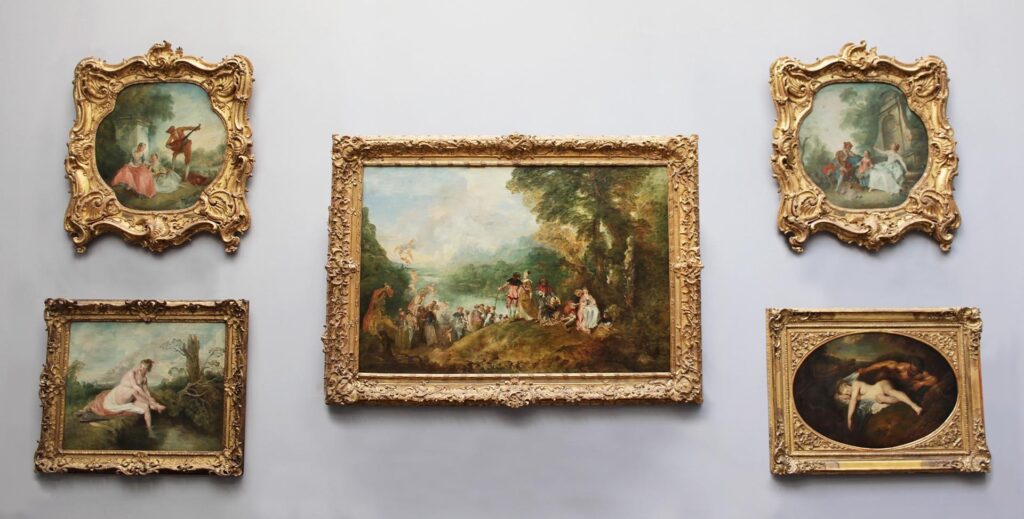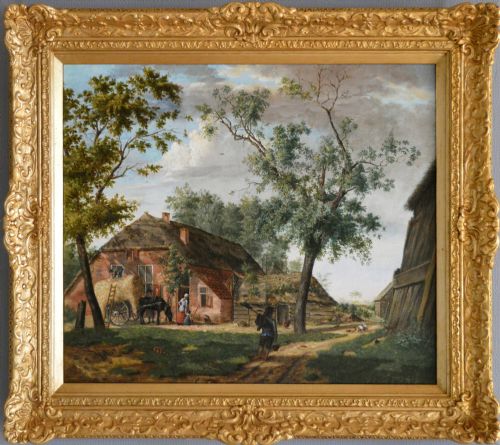Antique Landscape Oil Painting: A Timeless Journey Through Art and Nature
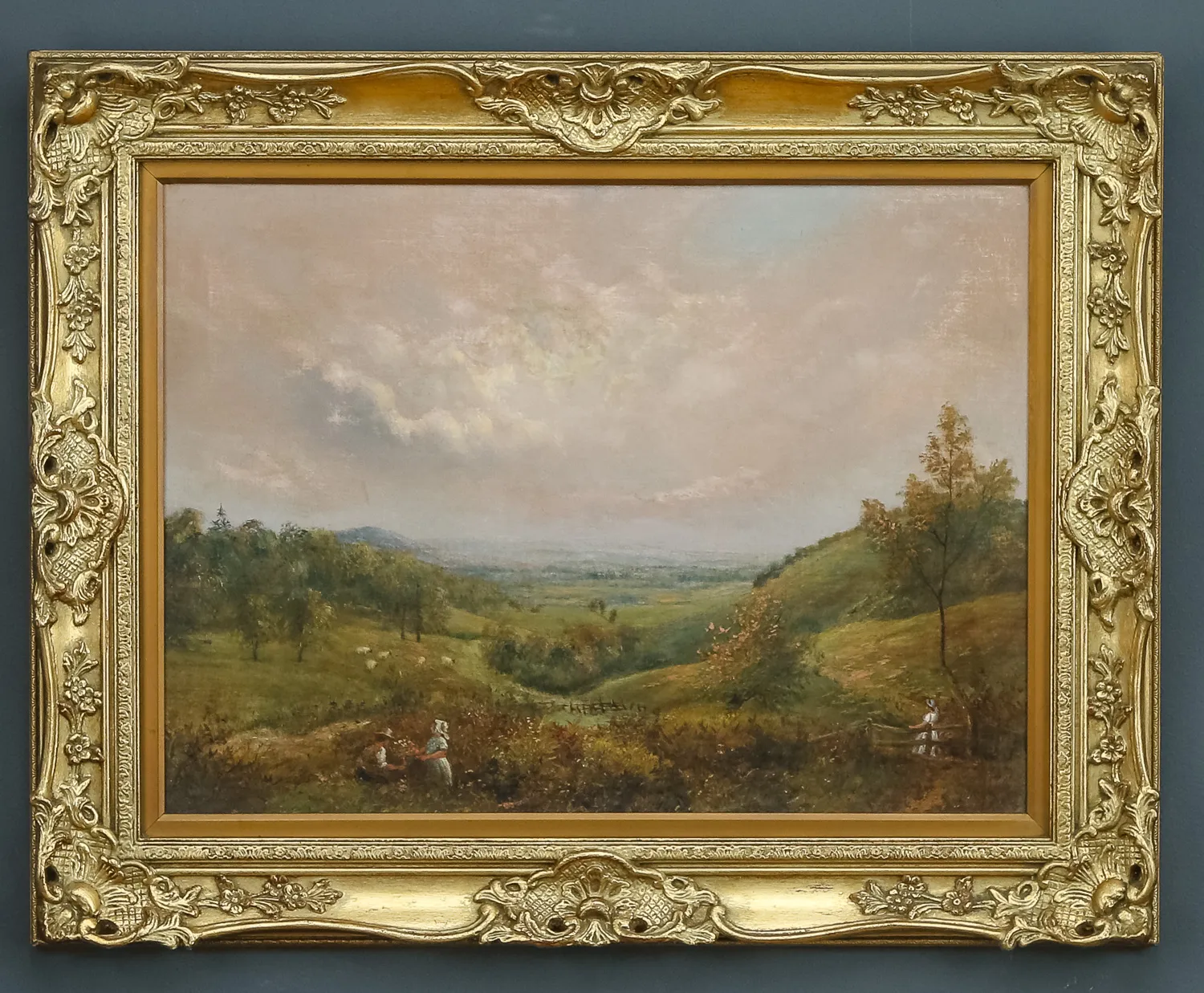
Antique landscape oil painting has long captivated collectors, art enthusiasts, and interior decorators alike. These timeless works of art not only reflect the skill and vision of the artist but also serve as windows into the landscapes and atmospheres of bygone eras. From the subtle brushstrokes of early 19th-century masters to the vivid, expressive works of later periods, antique landscape oil paintings offer a rich tapestry of history, technique, and aesthetic pleasure. In this article, we explore the allure of antique landscape oil painting, the history behind it, how to identify authentic pieces, and how to incorporate them into modern interiors.
The Historical Significance of Antique Landscape Oil Painting
Landscape painting became a prominent genre in the art world during the Renaissance, but it truly flourished in Europe during the 17th and 18th centuries. Artists began to move away from purely religious or historical themes, focusing instead on the natural world. This shift gave rise to antique landscape oil painting as a celebrated form of artistic expression.
These paintings often captured idyllic countryside scenes, dramatic coastlines, and serene rivers, reflecting both the natural beauty and the cultural context of the time. Artists such as John Constable in England and Jacob van Ruisdael in the Netherlands helped define the genre, combining meticulous observation with imaginative interpretation. Owning an antique landscape oil painting is not just about decoration; it is about preserving a piece of history.
For those interested in exploring complementary vintage décor, you might enjoy browsing fall home decor favorites under 40 to see how antique art can enhance modern seasonal aesthetics.
Characteristics of Antique Landscape Oil Paintings
Identifying an antique landscape oil painting requires attention to several key elements:
- Medium and Technique: Traditional oil paints have a distinctive texture and depth that cannot be replicated by modern synthetic materials. Brushwork in antique pieces is often detailed and layered, showing the artist’s meticulous process.
- Canvas and Support: Authentic antique landscapes are typically painted on stretched canvas or wooden panels. Over time, natural aging may cause slight cracks in the paint, known as craquelure, which can indicate authenticity.
- Subject Matter and Style: While landscapes vary in style—from Romanticism’s dramatic scenery to the more precise realism of the 19th century—common themes include pastoral fields, coastal vistas, and forested paths.
- Signatures and Provenance: An artist’s signature, sometimes hidden in a corner or on the back of the canvas, helps confirm authenticity. Provenance, or the painting’s documented history, adds further value.
To gain inspiration on presenting antique artworks in a home setting, consider exploring sentimental art ideas for your home. These ideas often pair well with historical pieces like landscape oil paintings.
Collecting Antique Landscape Oil Paintings
Collecting antique landscape oil paintings is both an art and a science. Whether you’re a seasoned collector or a beginner, several factors should guide your purchase:
- Authenticity: Ensure the painting is genuine. This might involve consulting experts or reviewing the artwork’s provenance.
- Condition: Look for signs of restoration, damage, or fading. Minor imperfections can add charm and authenticity, but extensive damage can affect value.
- Subject and Composition: Choose landscapes that resonate with your personal taste or complement your interior design.
- Investment Potential: Antique landscapes often appreciate in value over time, particularly works by renowned artists or those with historical significance.
For collectors seeking other vintage treasures, faux-rusted vintage scale makeovers provide inspiration for combining antique artwork with rustic décor elements.
Techniques Used in Antique Landscape Oil Painting
Antique landscape oil paintings showcase a variety of techniques that highlight the skill of the artist:
- Layering and Glazing: Many painters used multiple thin layers of oil to create depth and luminosity. Glazing allows light to reflect off the lower layers, creating a natural glow.
- Impasto: Some artists applied paint thickly to give texture and dimension to elements like trees or mountains.
- Atmospheric Perspective: This technique creates the illusion of depth by gradually fading colors and reducing detail in the background, making scenes appear more realistic.
- Chiaroscuro: The play of light and shadow adds drama and enhances the three-dimensional effect.
Understanding these techniques not only helps in appreciating the artistry but also in verifying authenticity when purchasing antique pieces.
Preserving Your Antique Landscape Oil Painting
Preservation is crucial to maintain the beauty and value of antique landscape oil paintings. Here are some essential tips:
- Proper Framing: Use archival-quality frames and materials to protect the painting from environmental damage.
- Controlled Environment: Keep the painting in a stable environment with moderate temperature and humidity levels. Avoid direct sunlight to prevent fading.
- Regular Cleaning: Dust gently with a soft, dry cloth. Professional cleaning is recommended for more thorough maintenance.
- Handling with Care: Always handle paintings with clean hands or gloves and avoid touching the painted surface directly.
For tips on preserving other home décor items with care, check out how to keep pumpkins from rotting—the principles of gentle maintenance and environmental control are surprisingly similar.
Incorporating Antique Landscape Oil Paintings in Modern Interiors
One of the most rewarding aspects of owning an antique landscape oil painting is the ability to incorporate it into contemporary interior designs. These pieces add character, depth, and a touch of history to any space:
- Gallery Walls: Pair multiple antique landscapes with other vintage art or photographs for an eclectic gallery display.
- Statement Pieces: A large, framed landscape can serve as a focal point above a mantel or sofa.
- Blending Styles: Combine antique art with modern furnishings to create a balanced, sophisticated aesthetic. Mixing eras can highlight the timeless beauty of the painting.
For more creative home décor ideas that blend old and new, visit cozy fall porch décor or faux marble top coffee table makeovers, which show how antique-inspired elements harmonize with modern settings.
Understanding Value and Investment in Antique Landscape Oil Painting
The value of an antique landscape oil painting depends on several factors:
- Artist Recognition: Works by well-known artists or those with historical significance fetch higher prices.
- Condition and Preservation: Paintings in excellent condition or expertly restored are more valuable.
- Rarity and Subject Matter: Unique landscapes or rare scenes can significantly increase value.
- Market Trends: The art market fluctuates, and trends in collecting can influence prices.
Investing in antique landscape oil paintings is not just about financial returns—it’s about preserving culture, history, and artistic mastery. Many collectors also find personal fulfillment in owning pieces that have survived centuries, each telling its own story.
Frequently Asked Questions About Antique Landscape Oil Paintings
Q1: How can I verify if my painting is an authentic antique?
Look for signs like craquelure, canvas or panel aging, artist signatures, and provenance documentation. Consulting an expert is highly recommended.
Q2: Are antique landscapes a good investment?
Yes, especially if they are from recognized artists or rare periods. They often appreciate in value over time, but passion and personal enjoyment should also guide collecting decisions.
Q3: Can I display antique paintings in any room?
Absolutely. While living rooms, studies, and hallways are popular, even kitchens and bedrooms can benefit from the historical and aesthetic charm of these works, provided they are protected from excessive humidity and sunlight.
For additional tips on integrating timeless décor into everyday spaces, explore simplified decorating ideas.
Conclusion
An antique landscape oil painting is more than just an artwork—it’s a tangible connection to history, a showcase of artistic skill, and a timeless decorative piece. Whether you are a collector, interior designer, or simply an art enthusiast, these paintings offer endless opportunities to appreciate natural beauty and historical context. By understanding their history, techniques, and preservation methods, you can ensure that your antique landscapes remain cherished treasures for generations to come.
For more inspiration on blending antique art with modern living, consider exploring sentimental art ideas for your home or DIY gold leaf sculpture projects, which enhance the charm and sophistication of any space.
